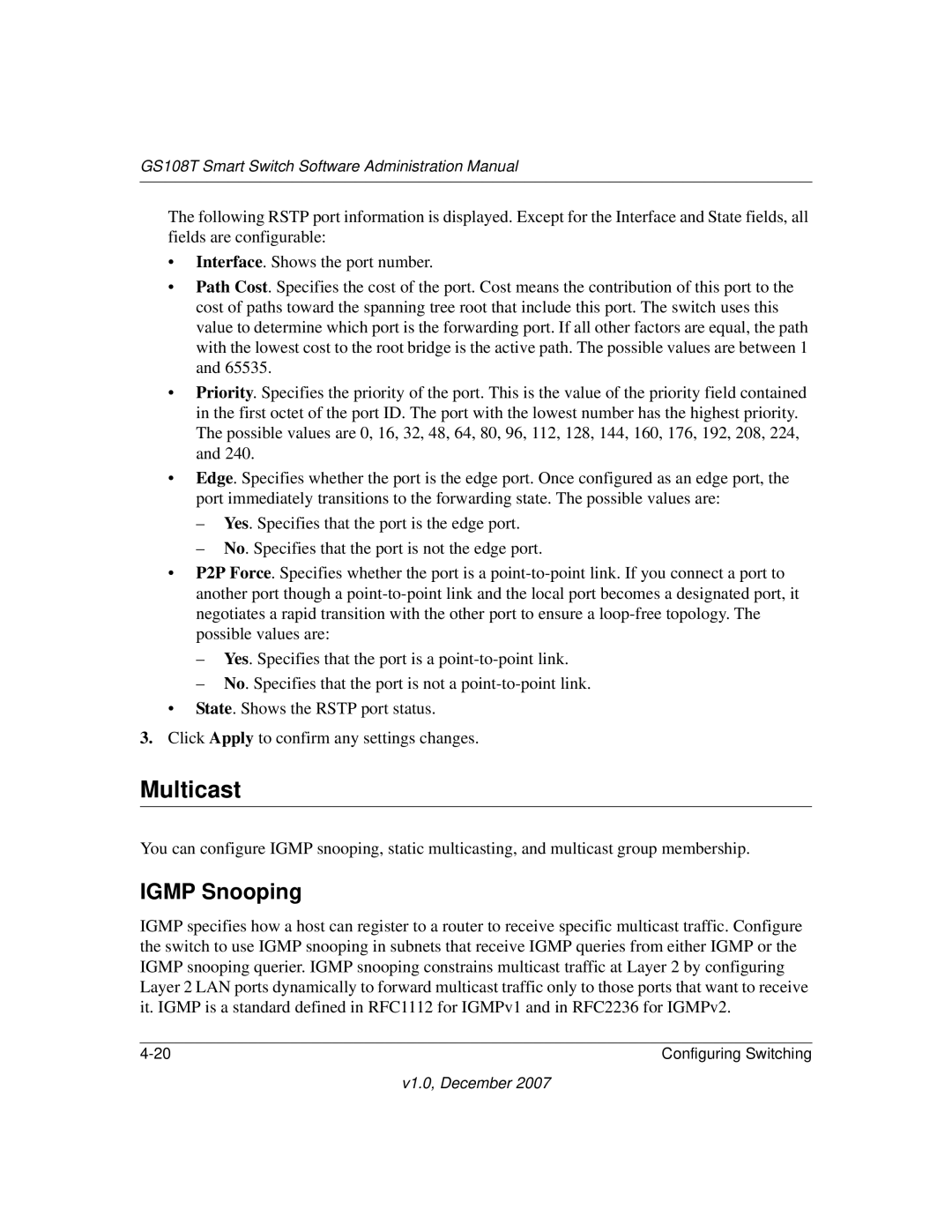
GS108T Smart Switch Software Administration Manual
The following RSTP port information is displayed. Except for the Interface and State fields, all fields are configurable:
•Interface. Shows the port number.
•Path Cost. Specifies the cost of the port. Cost means the contribution of this port to the cost of paths toward the spanning tree root that include this port. The switch uses this value to determine which port is the forwarding port. If all other factors are equal, the path with the lowest cost to the root bridge is the active path. The possible values are between 1 and 65535.
•Priority. Specifies the priority of the port. This is the value of the priority field contained in the first octet of the port ID. The port with the lowest number has the highest priority. The possible values are 0, 16, 32, 48, 64, 80, 96, 112, 128, 144, 160, 176, 192, 208, 224, and 240.
•Edge. Specifies whether the port is the edge port. Once configured as an edge port, the port immediately transitions to the forwarding state. The possible values are:
–Yes. Specifies that the port is the edge port.
–No. Specifies that the port is not the edge port.
•P2P Force. Specifies whether the port is a
–Yes. Specifies that the port is a
–No. Specifies that the port is not a
•State. Shows the RSTP port status.
3.Click Apply to confirm any settings changes.
Multicast
You can configure IGMP snooping, static multicasting, and multicast group membership.
IGMP Snooping
IGMP specifies how a host can register to a router to receive specific multicast traffic. Configure the switch to use IGMP snooping in subnets that receive IGMP queries from either IGMP or the IGMP snooping querier. IGMP snooping constrains multicast traffic at Layer 2 by configuring Layer 2 LAN ports dynamically to forward multicast traffic only to those ports that want to receive it. IGMP is a standard defined in RFC1112 for IGMPv1 and in RFC2236 for IGMPv2.
Configuring Switching |
